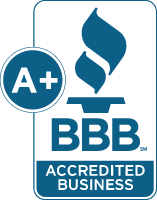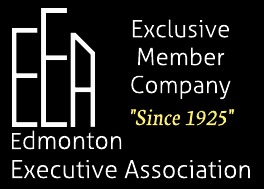Facts About Carpet Care – Deep Cleaning
Methods of Cleaning Deep Cleaning
Daily vacuuming is the most important cleaning activity, but deep extraction cleaning must be performed to remove stubborn or embedded soil. The Carpet and Rug Institute recommends that carpet be dry- or wet-extraction cleaned a minimum of every 12 or 18 months before it shows soiling. Use a cleaning method recommended by the carpet manufacturer to maintain their warranty.
Carpet should receive regular deep cleaning to maintain its good looks. A carpet cleaning professional may be hired or carpet cleaning equipment may be purchased or rented for do-it-yourself cleaning.
The fiber system used should be the primary factor in selecting a cleaning method. The majority of carpet manufactured today is constructed with synthetic fibers such as nylon, polyester, or olefin, and may be cleaned with most cleaning methods.
Natural fibers may require specialized care. Following are general guidelines for these fiber systems:
Wool – Wool fibers may be cleaned using all cleaning methods, although excessive agitation and excessive heat should be avoided. Wool is easily damaged by bleaches and alkaline. Wool should be cleaned with neutral detergents (pH 5.0-8.0) and dried quickly to limit yellowing or browning.
Cotton/Rayon – Cotton and rayon are cellulosic fibers and may be cleaned using all cleaning methods. Most cellulosic fibers are subject to browning if prolonged drying occurs or if alkaline solutions are used. Shrinking may occur if these fibers are overwet. Avoid excessive agitation.
Silk – Silk should be cleaned using a dry cleaning process. These fibers may be damaged by high temperatures, high pH, sunlight and will lose strength when wet. The cleaning of silk fibers is best left to the carpet cleaning professional.

Sisal and Other Plant Fibers – Plant fibers used in carpet construction, including sisal, cotton, jute, coconut (coir), pineapple, ramie, and hemp, have characteristics similar to cotton. These fibers may be cleaned with all cleaning methods, but dry extraction and dry foam extraction are most often recommended. To limit color change or odor transfer, a pH of less than 7.5 should be used and precautions should be taken to expedite rapid drying. It is best to use a carpet cleaning professional.
There are five accepted methods for cleaning carpet make from synthetic fibers. Rely on the carpet manufacturer’s recommendations. When choosing any cleaning method, select cleaning agents sold especially for stain resistant carpet cleaning, and follow the directions for dilution and application. Never use soap, laundry detergent, automatic dishwasher detergent, or any of the strong household cleaning agents intended for use on hard surfaces such as woodwork, linoleum, or tile. For best cleaning results, always pre vacuum the area to be cleaned and apply a preconditioning solution prior to cleaning. A precondition solution is a detergent solution applied to the carpet prior to cleaning to begin loosening soil. These solutions typically require 8-10 minutes to begin the soil loosening process.
Absorbent Pad Method
The absorbent pad method should be used only by a properly trained cleaning professional. The rotary bonnet method uses a machine similar to a floor buffer with an absorbent spin pad attached to remove the soil. The spin pad absorbs soil onto the pad, and soil is removed when the pad is rinsed. To reduce pile distortion, keep the absorbent pad well lubricated with cleaning solution. Replace pad often to prevent transfer of soil back to the carpet face.
Dry Extraction (Polymer Compm..1nd} Method
An absorbent compound saturated with detergents and solvents is brushed in and around the fibers with especially-designed machines or brushes. The compound attaches to the soil particles, and both the soil and compound are then removed by vacuuming.
Dry Foam Extraction Method!
In dry foam cleaning a detergent solution is whipped into a foam and applied to the carpet. The foam is worked into the carpet by a especially-designed machine with reel type brushes, followed by wet vacuuming. Some machines have their own extraction capabilities while others need thorough vacuuming after the carpet is dry.
Hot Water Extraction Method
This method is sometimes called “steam cleaning.” Areas of heavy use are preconditioned to suspend ground-in soil, then a pressurized cleaning solution is injected into the pile. Suspended soil and solution are immediately extracted. Follow directions carefully and avoid over wetting. Ensure speedy drying by using fans, operating the building air conditioning system (HVAC) in the “on” position, and by performing additional drying strokes.
Rotary Shampoo
The rotary shampoo method uses equipment similar to the rotary bonnet method, except that a cleaning solution is injected onto the carpet before cleaning or through especially-designed brushes. Never use a do-it-yourself machine designed for hard surface floorcovering with counter rotating (rotary) brushes. Pile distortion or untwisting of the fiber can occur. ·
Do-lt-YourseU Cleaning
Do-it-yourself cleaning may be an economical choice between professional cleanings. For any do-it-yourself cleaning method, the following points are critical.
- Always pre-vacuum to remove as much dry soil as
- Follow instructions carefully!
Consider the following precautions when selecting a wet cleaning method.
- Remove furniture from the room before cleaning or, if impractical, place plastic film under and around the legs of chairs, tables, and other furniture to prevent rust or furniture stains from developing on the
- Use only the recommended cleaning solution strength. Stronger than recommended solutions may cause accelerated re-soiling. Rinse all detergent from the carpet to prevent accelerated
- Do not over-wet the carpet. Over-wetting may cause separation of the backing, separation of the seams, shrinkage, discoloration, and
- The carpet should be dry within 12 hours. Provide proper ventilation or use fans to quickly dry the carpet and exhaust any existing solution-related
- Allow the carpet to dry completely before walking on
Professional Cleaning Services
Consider the services of a carpet cleaning professional before your carpet and rugs begin to show soil. Allowing carpet and rugs to become excessively soiled will make cleaning more difficult and will shorten its useful life.
Recommendations can be obtained from satisfied friends, carpet retailers, the Better Business Bureau, and local business groups for reliable, certified cleaning professionals in your area. Choose a carpet cleaning professional who is properly trained for the following services. Prior to using these services, you may wish to contact the carpet manufacturer to prevent voiding warranties.
- Carpet Redyeing (color repair)
- Fire and Water Damage Restoration (For water damage follow guidelines in the IICRC Standard and Reference Guide for Professional Water Damage Restoration SS00-94)
- In-plant Cleaning (for rugs)
- Odor Control (nuisance odors such as mildew, tobacco, and pet)
- Repairs, Restretching, Reinstalling
- Spot Removal
- Topical Treatments (soil-removal and stain-resist treatments)
- Allow the carpet to dry completely before walking on
In order to determine the amount and type of cleaning services needed, have a representative of the cleaning firm come to your home to make a visual inspection. The cleaning professional can inspect the carpet for problem stains or excessively soiled areas that may require additional attention. Obtain a written agreement for all work to be performed. Under normal circumstances, there should be no extra charge for activities, such as moving furniture, preconditioning, and routine spot and stain removal.
Beware of pricing that is “too good to be true.” Professionals charge only for services that are authorized in writing before cleaning begins. Most cleaning is based on the total number of square feet to be cleaned. Many firms do have cleaning specials; however, pricing by the room or low prices quoted over the phone may have hidden restrictions or mandatory add-ons. A reliable firm will tell you the steps that they are going to use to clean your carpet and provide a written agreement before the work is started. Should you question the need for any required add-ons, contact the carpet manufacturer for assistance.
In Edmonton we recommend Alberta Carpet Cleaning at 780-454-1937 and please ask for Holly Jones. Tell her Beck Antiques referred you.











